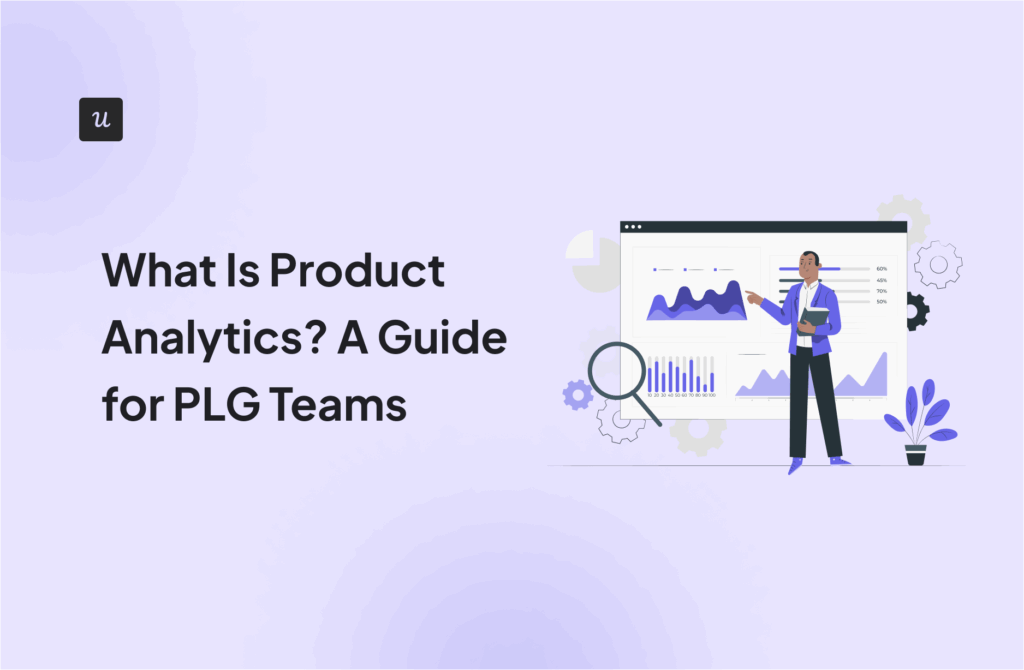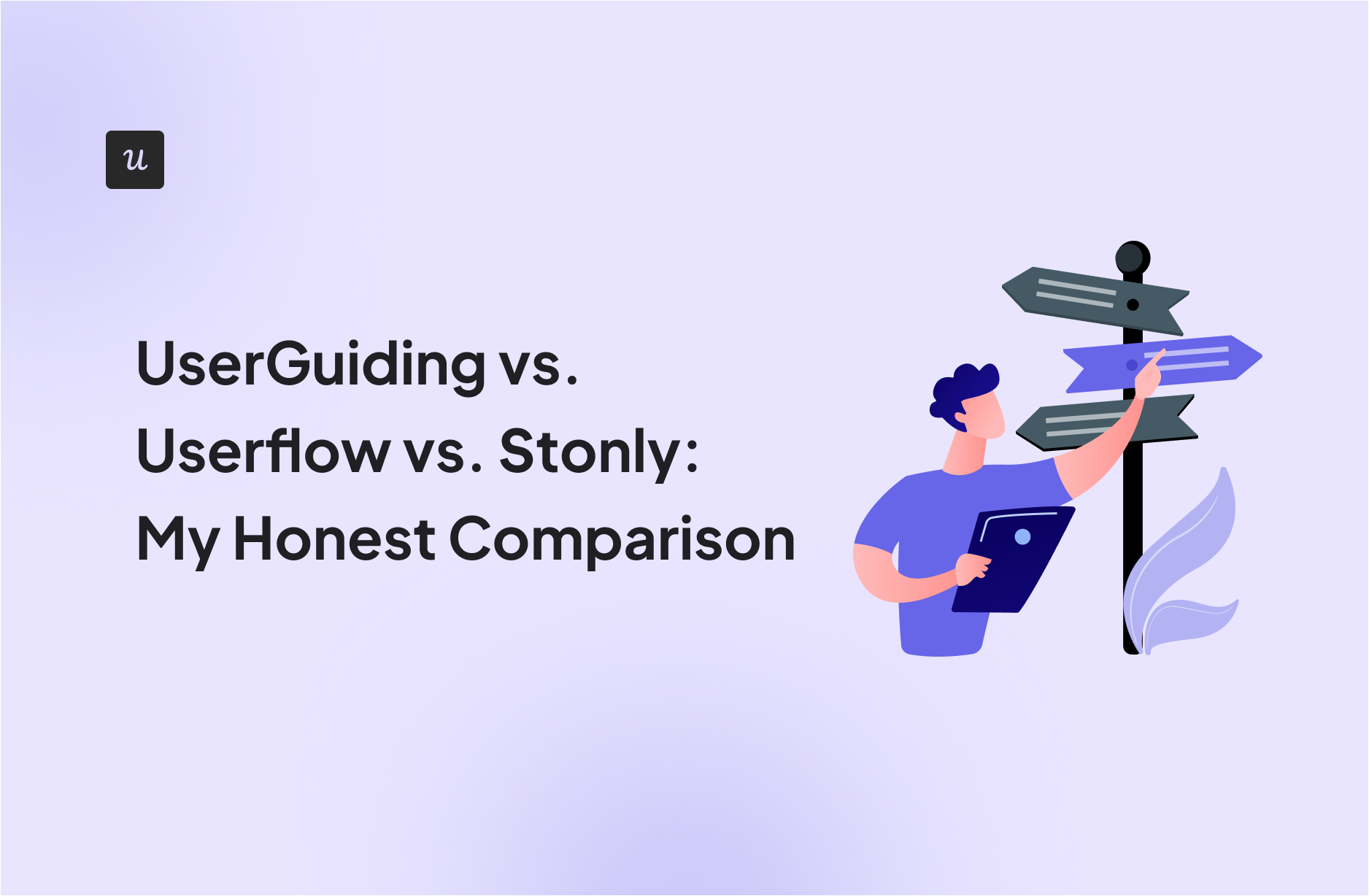
Try Userpilot Now
See Why 1,000+ Teams Choose Userpilot

TL;DR: UserGuiding vs. Userflow vs. Stonly
| Tool | Pricing | G2 Rating | Best For | Notable Features |
|---|---|---|---|---|
| UserGuiding |
|
4.7/5 | Startups & budget-conscious teams needing quick, simple onboarding. | No‑code product tours, resource center, checklists, AI assistant, and basic analytics. |
| Userflow |
|
4.8/5 | Mid-market to enterprise teams wanting scalable custom flows. | Unlimited flows, targeting, checklists, Resource Center, no-code tracking, and localization. |
| Stonly |
|
4.8/5 | Support and education teams focused on self-service guidance. | Interactive knowledge base, branching logic, support integrations, and embedded help. |
What do UserGuiding, Userflow, and Stonly have in common?
At their core, UserGuiding, Userflow, and Stonly all aim to solve the same problem: helping SaaS teams onboard new users faster and drive adoption without relying too heavily on engineering resources.
All three tools provide a similar set of essential features:
- Product tours and walkthroughs to guide users through key workflows.
- Tooltips and in-app messages to provide contextual nudges.
- Checklists to make user onboarding feel structured and achievable.
- Basic analytics to track engagement and identify drop-offs.
- Knowledge bases or resource centers for self-serve education.
On the surface, they may appear interchangeable, but dig a little deeper and you’ll find that each tool emphasizes a different strength.
What is your primary goal right now?
Understanding this helps us see if UserGuiding, Userflow, or Stonly is the right starting point for improving customer satisfaction.
What is your team’s budget like?
Price is a key factor when comparing UserGuiding vs Userflow vs Stonly.
How important is deep analytics and integration with other tools?
Your need for data will influence the best choice for your team.
You need a solution that balances power with ease-of-use.
While UserGuiding, Userflow, and Stonly all have their strengths, many scaling teams find they need an all-in-one platform that combines powerful analytics with no-code simplicity to boost customer satisfaction.
Userpilot offers the deep engagement features of Userflow, the ease of UserGuiding, and the self-service support of Stonly, all in one place.
UserGuiding vs. Userflow vs. Stonly: Head-to-head comparison
I asked a few key questions when researching these tools, and here’s what I found:
| Question | Winner | Why It Matters |
|---|---|---|
| How quickly can my team get up and running? | UserGuiding | It’s the easiest to set up, even for non-technical teams. Perfect if speed is your priority. |
| What if we need advanced customization and pixel-perfect design? | Userflow | Offers the strongest customization options and design flexibility, but requires some effort to set up. |
| Which tool is best for providing on-demand support? | Stonly | Stonly stands out with its interactive knowledge bases and self-service focus. It’s a win for support-heavy teams. |
| What if budget is my top concern? | UserGuiding | UserGuiding is the most affordable option, especially suited for SMBs and startups. |
| Which one has the best analytics and integrations? | Userflow | Userflow’s strong reporting, segmentation, and integration capabilities make it a great fit for mid-market/enterprise teams with such needs. |
Let’s see why and how I arrived at my decision in a little more depth.
1. UserGuiding deep dive
UserGuiding is a solid pick for budget-conscious teams that need to drive adoption fast but aren’t ready for the complexity (or price tag) of enterprise-grade platforms.
| Overall G2 rating | 4.7/5 |
|---|---|
| Overall Capterra rating | 4.7/5 |
Key features
- No-code product tours: UserGuiding lets you build walkthroughs with tooltips, hotspots, modals, and other interactive elements. You can launch simple flows in minutes using its Chrome extension and customize the appearance with themes.
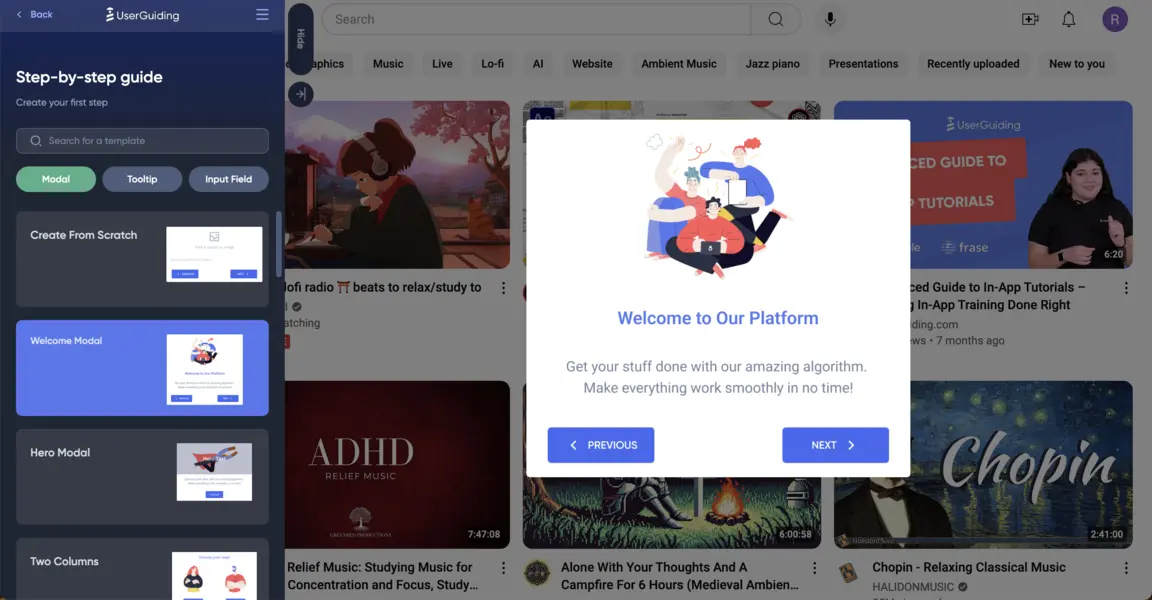
- In-app resource center and knowledge base: The digital adoption platform offers a resource center widget where you can embed guides, FAQs, and external docs. It’s searchable and always accessible inside your product.
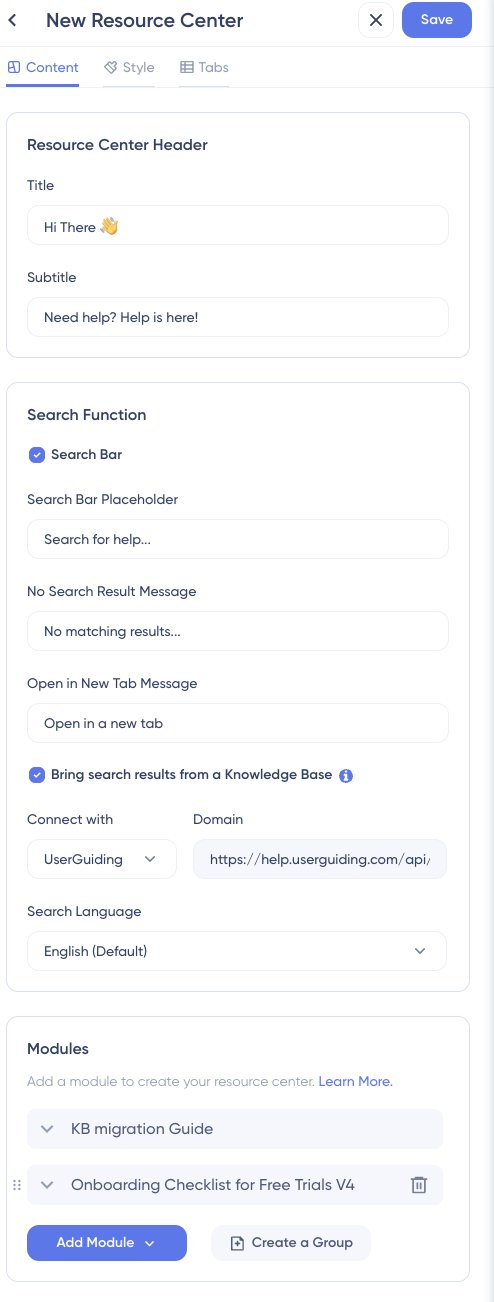
- User behavior analytics: UserGuiding tracks engagement metrics like completion rates, drop-offs, and overall guide usage. You can integrate this data with third-party tools such as Google Analytics, Segment, or Amplitude for more advanced analysis. In my experience, the dashboard is intuitive for quick insights, but may feel a bit too high level if you’re used to deeper analytics platforms.
- Surveys: You can launch in-app surveys to gather feedback at different points in the customer journey. UserGuiding provides plug-and-play templates to make survey creation easy.
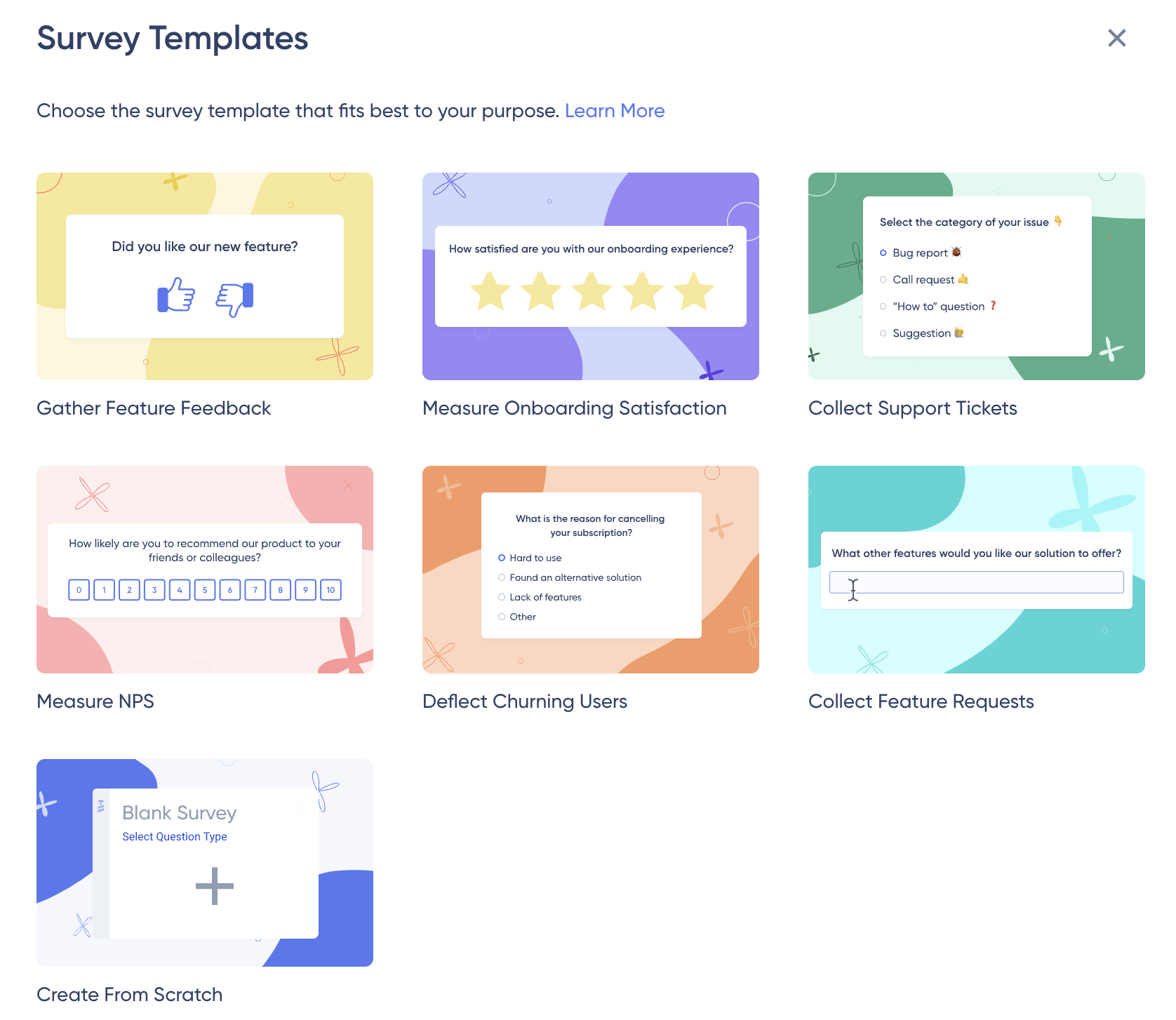
UserGuiding pros
- Analytics dashboard: You can monitor metrics like monthly active users (MAUs), guide views, and checklist interactions. It’s a practical starting point for engagement tracking, though it mainly focuses on content created inside UserGuiding.
- Customizable themes: The theming options are surprisingly granular, letting you adjust fonts, colors, and branding elements. This helps make user onboarding flows look consistent with your product’s design.
- Easy onboarding: UserGuiding practices what it preaches. Its own onboarding checklist walks you step by step through creating your first guide, which shortens the learning curve.
“The platform stands out for its ease of use and intuitive interface. The features are well integrated, which facilitates the creation of flows and guides without technical complexity…this, combined with the ease of implementation, makes the adoption of the solution quick and uncomplicated.” – Eduardo’s review on G2.
UserGuiding cons
- Limited survey analytics: UserGuiding makes it easy to launch surveys and segment users by response and date, but its reporting lacks deeper trend analysis or rich filtering options.
- Manual localization: With UserGuiding, you need to export content into CSV files, translate them externally, and then re-upload. There’s no built-in AI or auto-translation, which makes scaling across multiple languages and user segments time-consuming. Consider Userpilot if localization is a priority for your team. Our platform offers AI-powered localization in 30+ languages, allowing you to translate experiences instantly and manage them more efficiently.
- Pricing leaps between plans: While UserGuiding offers a free plan, teams often encounter limits on guides and checklists early on. The jump from the Starter plan to the Growth plan ($174 to $349 per month) can feel steep for startups testing scale. Several users have also reported sudden price hikes:
“The subscription price doubled since last year without any clear justification or noticeable added value.” – Reviewer on G2.
UserGuiding pricing
UserGuiding’s pricing is tiered to support teams at different stages of growth, starting with a generous free plan:
- Support essentials (Free forever): Includes a help center suite, knowledge base, product updates, a resource center, and the AI assistant.
- Starter ($174/month billed yearly): Unlocks all onboarding features, plus reporting, user segmentation, and customizable surveys. In my experience, this is the best value tier for early-stage SaaS teams that need more than just documentation.
- Growth ($349/month billed yearly): Provides A/B testing, goal tracking, custom CSS and localization, premium integrations, and adds advanced analytics capabilities for teams scaling their onboarding and needing optimization tools.
- Enterprise (quote-based): Includes everything in Growth plus SOC2 & GDPR compliance, SAML SSO, activity logs, and dedicated coaching/support.
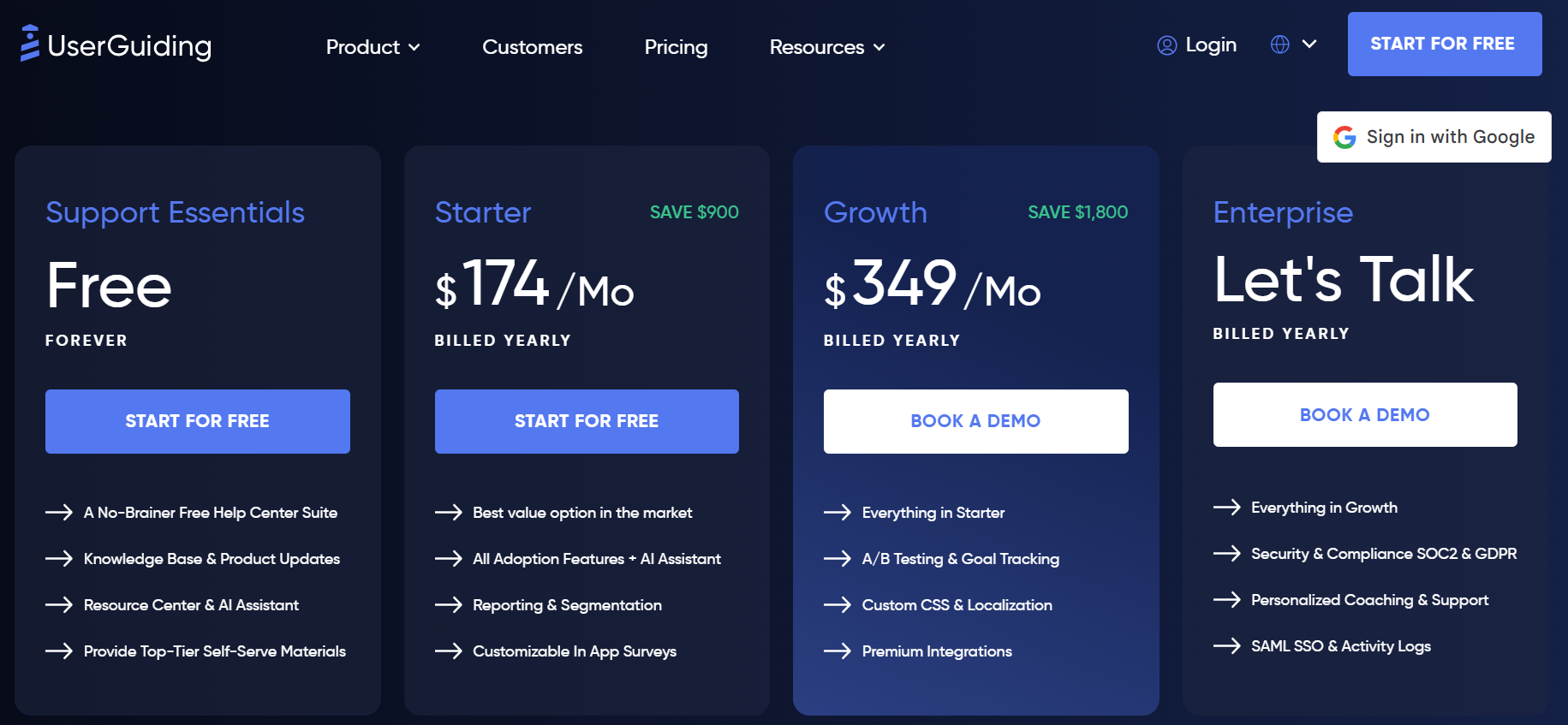
2. Userflow deep dive
Userflow is best for mid-market to enterprise SaaS companies that want control, robust targeting, and deeper customization without building everything in-house. It’s still no-code, but it rewards teams that can invest time in configuration and design systems.
| Overall G2 rating | 4.8/5 |
|---|---|
| Overall Capterra rating | 4.8/5 |
Key features
- Flows and tours: Userflow lets you create product tours, checklists, tooltips, hotspots, banners, and announcements, all without code. You can chain multiple steps, set mandatory completions, and even use conditional logic to trigger what happens next.
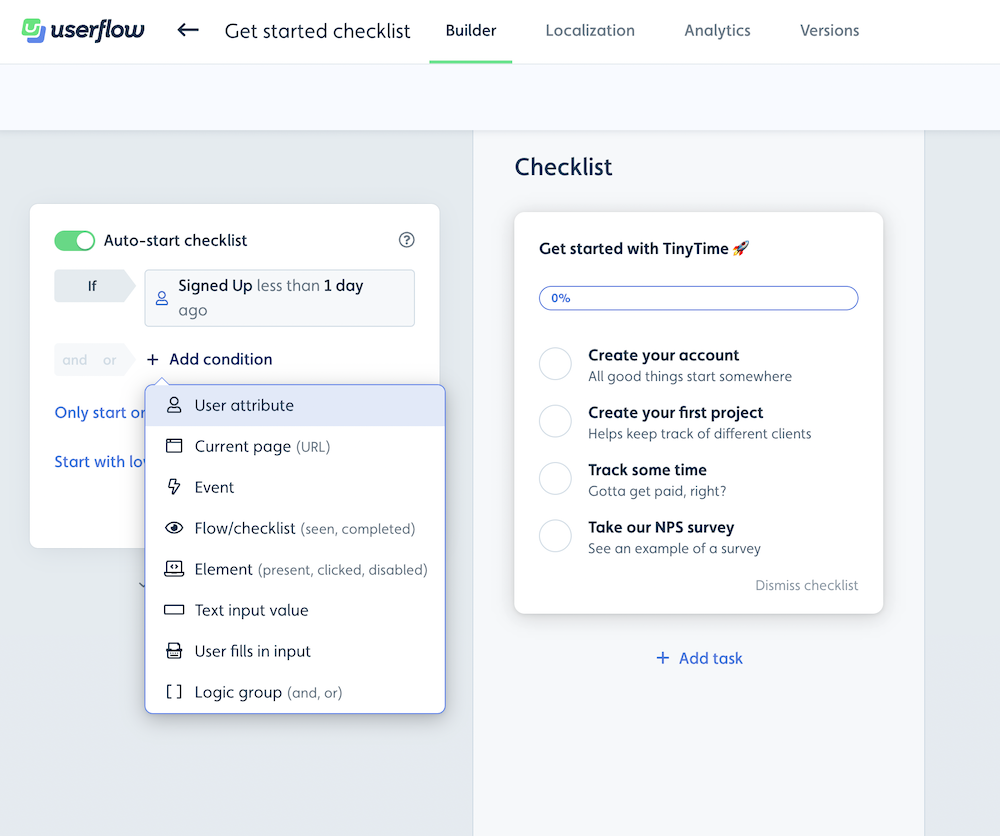
- No-code event tracking and integrations: You can track user clicks and custom events without code, then sync data to analytics tools like Amplitude, Mixpanel, or Heap. I’ve found this especially useful when product and growth teams want to test hypotheses quickly without waiting on engineering.
- AI assistant: Userflow offers a GPT-4–powered bot that pulls from your knowledge base or website to answer user questions in-app. It’s a handy way to keep support scalable while still personalizing responses.
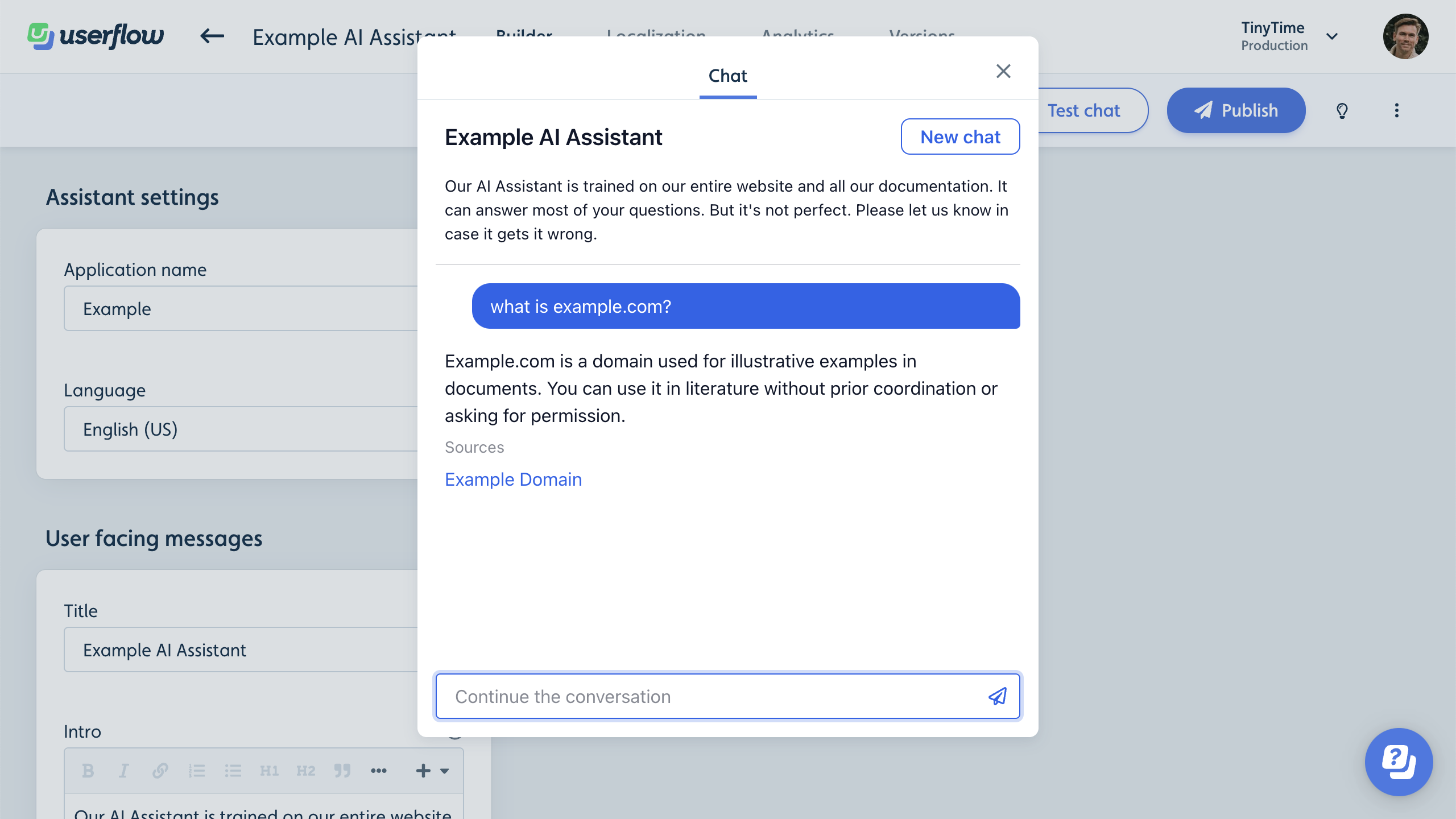
- In-app surveys: Like most product adoption solutions, Userflow lets you build surveys to gather valuable feedback. The platform also offers basic survey analytics to save you time, though most teams will still need to export responses for deeper analysis.
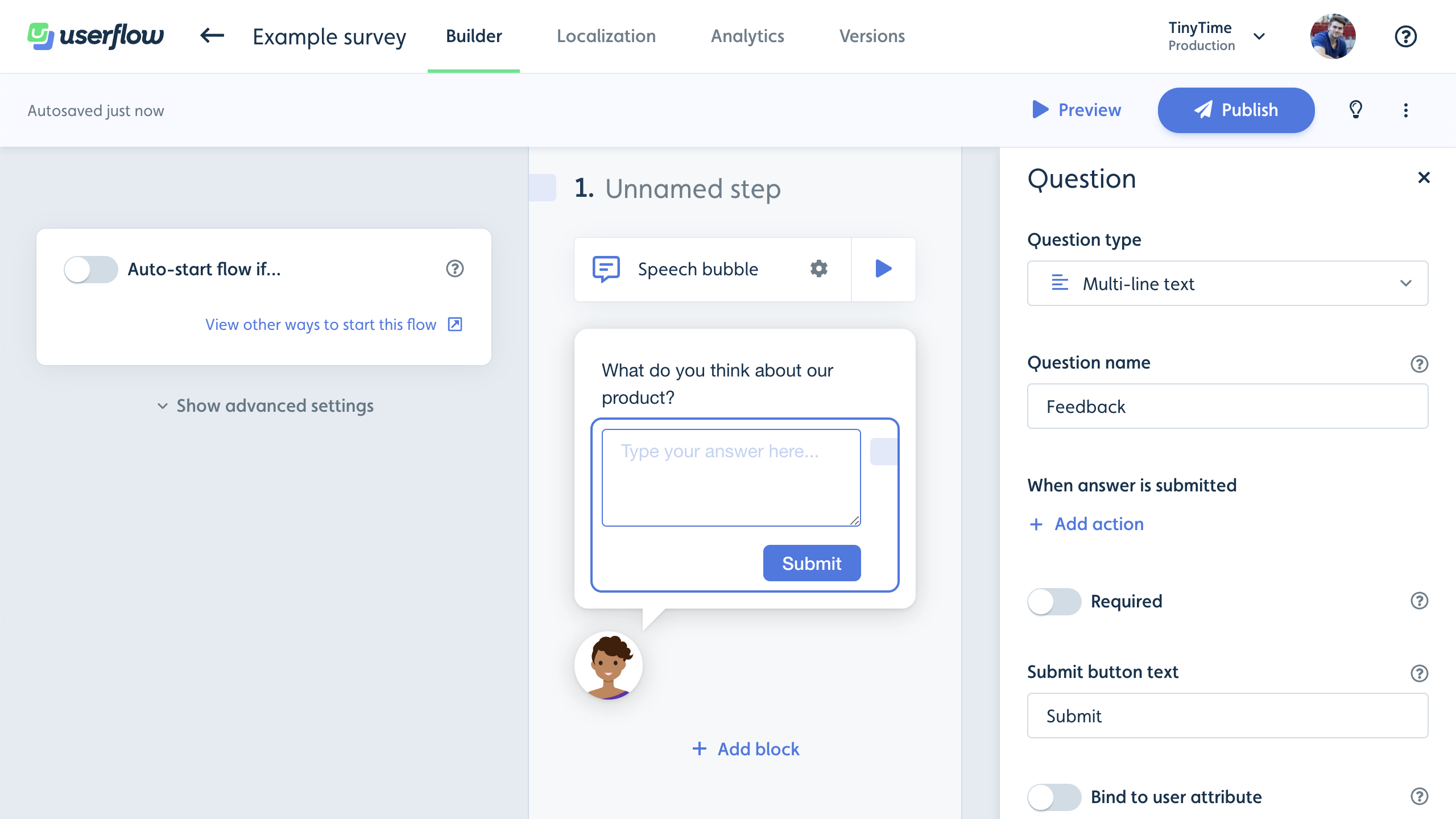
Userflow pros
- Highly customizable experiences: Userflow gives you control over user onboarding flows, targeting, and localization. This makes it a strong fit for complex SaaS products or companies rolling out across multiple regions.
- Intuitive builder (despite its depth): Even with all the flexibility, the drag-and-drop editor feels clean and approachable. It’s perfect for building advanced flows without needing a developer.
- Enterprise readiness: Userflow offers SOC2 Type 2 compliance, SSO, and dedicated customer support on higher tiers. These are the kinds of capabilities larger organizations look for before committing to a tool.
“Userflow is intuitive even to nontechnical roles, constantly improving and offers quick and friendly support.” – Kent’s review on G2.
Userflow cons
- Lightweight native analytics: While Userflow tracks flow completions and interactions, most teams end up exporting data to Amplitude, Mixpanel, or Heap for deeper cohort analysis. This makes it feel less like a full analytics solution and more like a bridge to other tools.
- Price can be steep for smaller teams: Userflow’s flexibility comes at a cost. Even the entry-level plan is more expensive than competitors like UserGuiding, which can put it out of reach for startups or early-stage SaaS.
- Manual step-link reconnection: You can reorder steps using drag-and-drop, but Userflow does not automatically adjust links between steps. After reordering, you must manually reconnect the affected steps to preserve flow continuity, which can be tedious and error-prone.
“Userflow pricing is expensive for small companies. Most notably, the AI Assistant can get pricey fast if your users actually use the chat (which is what you want them to do).” – Trevor’s review on G2.
Userflow pricing
Userflow’s pricing reflects its positioning as a mid-market to enterprise solution:
- Startup ($240/month billed annually): Includes 3,000 MAUs, 3 team members, unlimited flows, banners, checklists, a resource center, an AI assistant (100 messages/month), and basic integrations. A good entry point, but still pricey for very small teams.
- Pro ($680/month billed annually): Expands to 10,000 MAUs, unlimited team members, unlimited surveys/NPS, localization support, advanced integrations, company profiles, and priority support. In my view, this is the plan where Userflow really shines for growing SaaS.
- Enterprise (custom pricing): Adds SSO, concierge support, custom contracts/security reviews, and advanced compliance (SOC2 Type 2). Best for large organizations that need enterprise-grade governance.
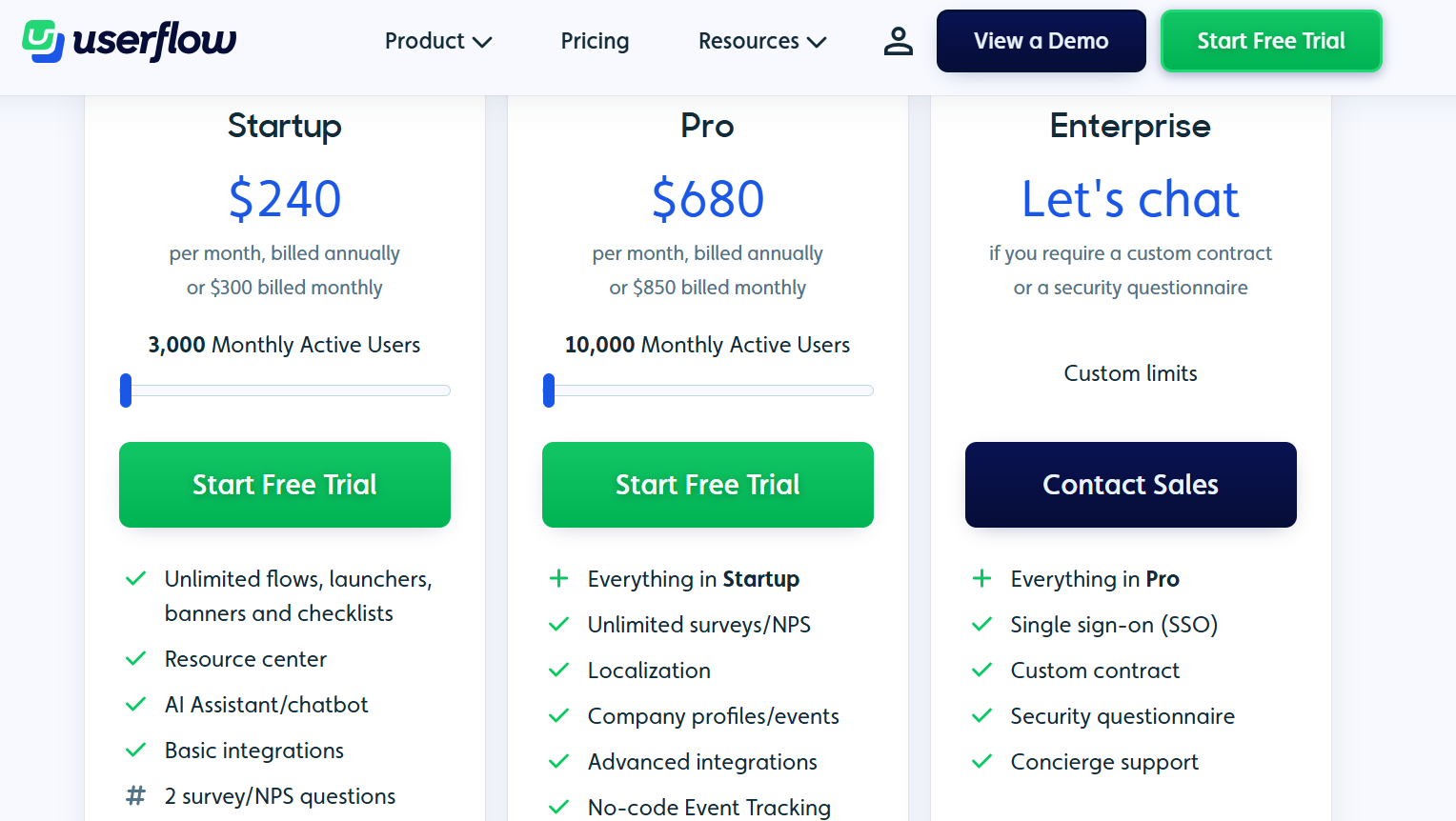
3. Stonly deep dive
Stonly is best suited for support-driven teams that want to empower customers through interactive knowledge bases and self-service guidance.
Rather than centering on product tours alone, it blends structured documentation with contextual in-app help to support the onboarding process and customer education at scale.
| Overall G2 rating | 4.8/5 |
|---|---|
| Overall Capterra rating | 4.3 |
Key features
- Interactive knowledge base: Both UserGuiding and Userflow include knowledge bases, but they mostly function as static repositories for guides and FAQs. Stonly takes a different approach. Its help center is interactive and step-by-step, allowing users to “choose their own path” to find answers. This dynamic structure makes troubleshooting easier, reduces confusion, and cuts down on repetitive back-and-forth with support.
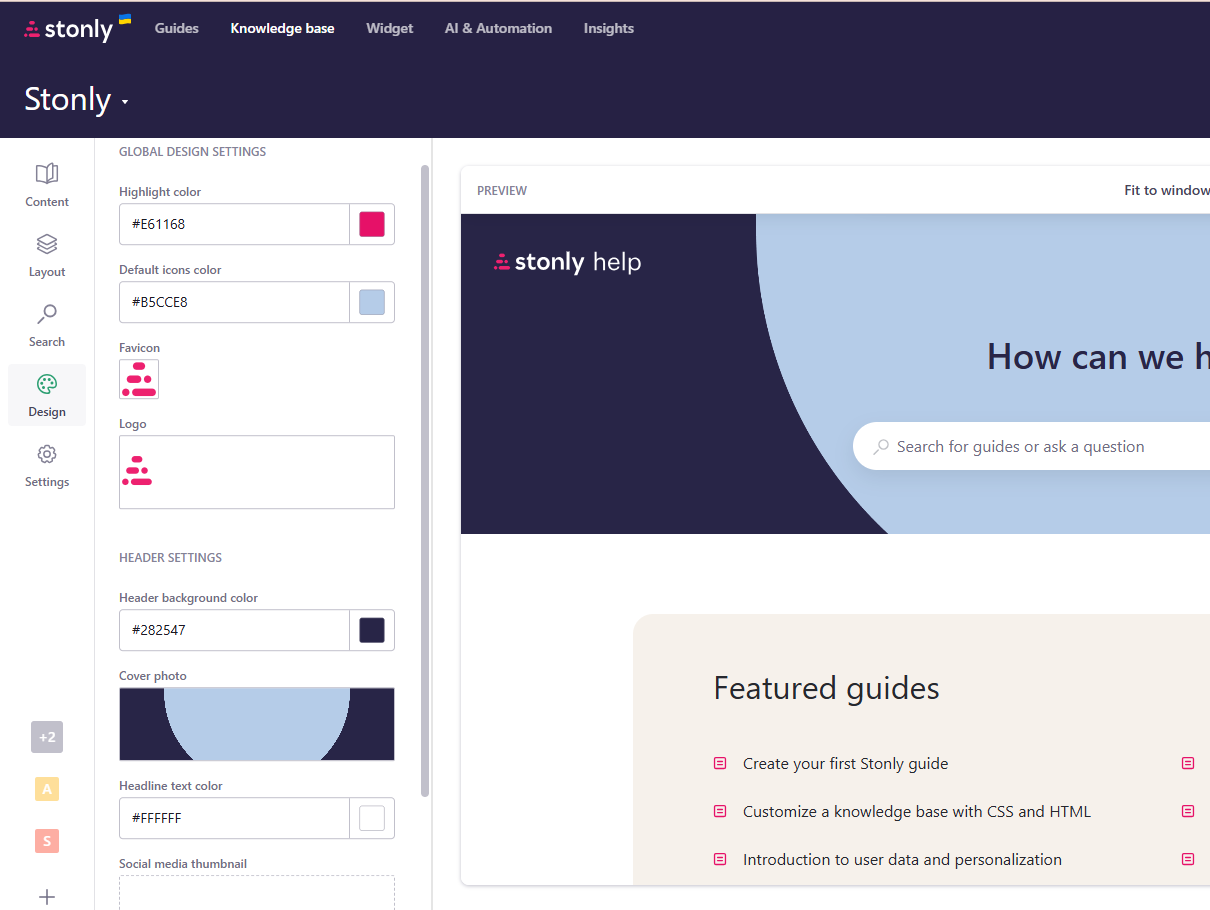
- Tours and widgets: Stonly lets you embed interactive walkthroughs and contextual help widgets directly inside your app or website. This way, users get step-by-step guides and dynamic knowledge content exactly where and when they need it.
- Analytics and reporting: You can track which articles, steps, or guides users engage with most. This makes it easier to identify knowledge gaps and optimize documentation.
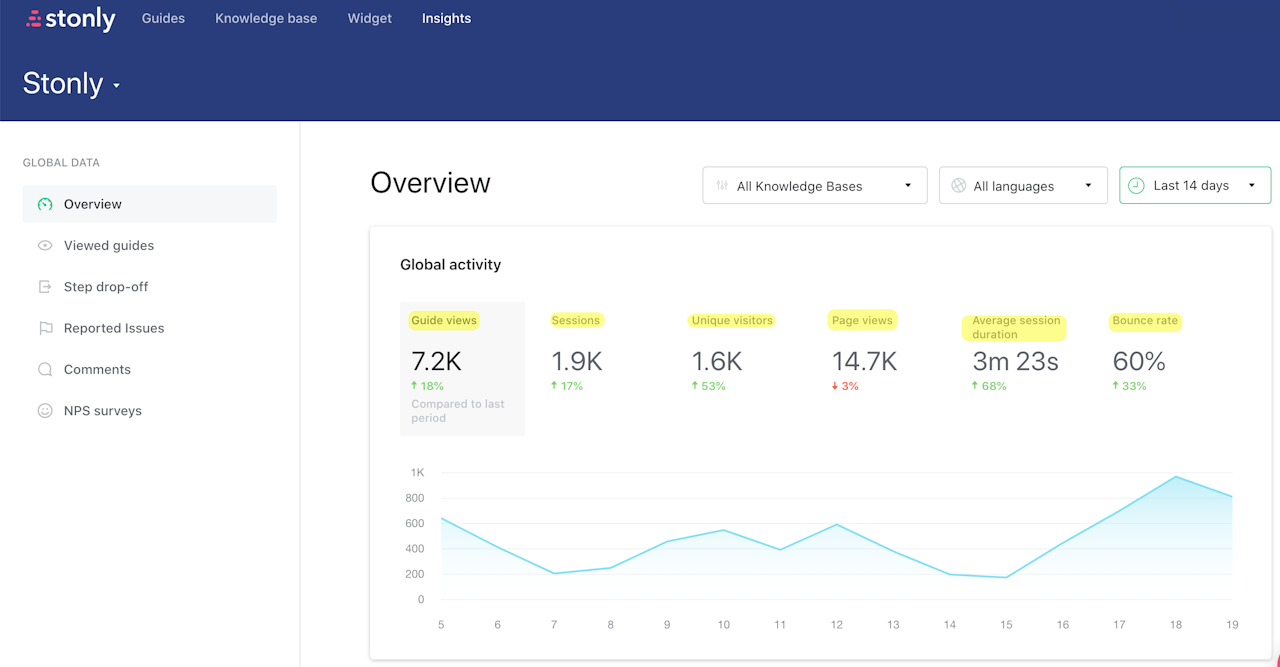
Stonly pros
- Knowledge-first approach: Stonly stands out because it treats the knowledge base as the core of the product rather than an add-on. This focus gives support teams a stronger way to scale self-service and reduce reliance on repetitive support tickets.
- Flexible branching logic: Stonly provides decision trees and branching tutorials that let you build personalized pathways for users. I’ve found this especially effective for complex workflows where “one size fits all” guides just don’t cut it.
- Strong support integrations: Stonly connects with Zendesk, Intercom, Freshdesk, and other customer service tools. This lets support agents share interactive guides directly in tickets and resolve customer issues faster.
“Stonly is one of the best apps I’ve used in terms of its balance between ease of use and powerful capabilities. I’ve used it to build many different workflows in English and French and found it to be a great, reliable solution for unauthenticated workflow development. Embedded objects and videos are supported. Workflows are easy to build and the Insights (analytics) feature makes results easy to measure.” – Graeme’s review on G2.
Stonly cons
- Less focused on in-product engagement: While Stonly does have checklists and flows, they’re not as advanced as what you’d get from Userflow or Userpilot. If your goal is driving product adoption inside the app, Stonly may feel limited.
- Analytics depth could improve: Stonly’s reporting covers guide usage and engagement but lacks the richer behavioral insights or goal tracking you’d expect from product adoption solutions. This makes it more of a support reporting tool than a full product analytics solution.
- Customization constraints: You can brand widgets and guides, but the level of control is limited compared to competitors. As a PLG marketer, I know too well how important it is for every detail to reflect the product’s identity. When customization falls short, the result feels slightly off-brand and less polished.
“One aspect where Stonly could improve is the availability of advanced customization options. While the software offers a decent range of customization features, some users might desire more flexibility in terms of design and layout. Having the separation between Widgets and Triggers is also a bit counter-intuitive.” Anonymous reviewer on G2.
Stonly pricing
Stonly offers three plans: Basic, Small Business, and Enterprise.
Every new account starts with a 14-day free trial of the Small Business plan. If you don’t upgrade when the trial ends, you are automatically moved to the free Basic plan.
- The Basic plan includes 400 guide views per month, 5 published guides (with up to 100 steps each), support for a single language, and 1 team member.
- The Small Business plan expands this to 5 team seats, unlimited guides, multi-language support, and up to 4,000 guide views per month. Historically, this plan cost $249 per month, with higher pricing if you needed more than 4,000 monthly views.
- Enterprise builds on Small Business by adding advanced features such as help desk integrations, AI Answers, automations, SSO, private knowledge bases, and higher limits on guide views and team members.
As of August 2025, however, Stonly no longer makes its pricing tiers public. To see current pricing, you’ll need to sign up for access or schedule a meeting with their team.
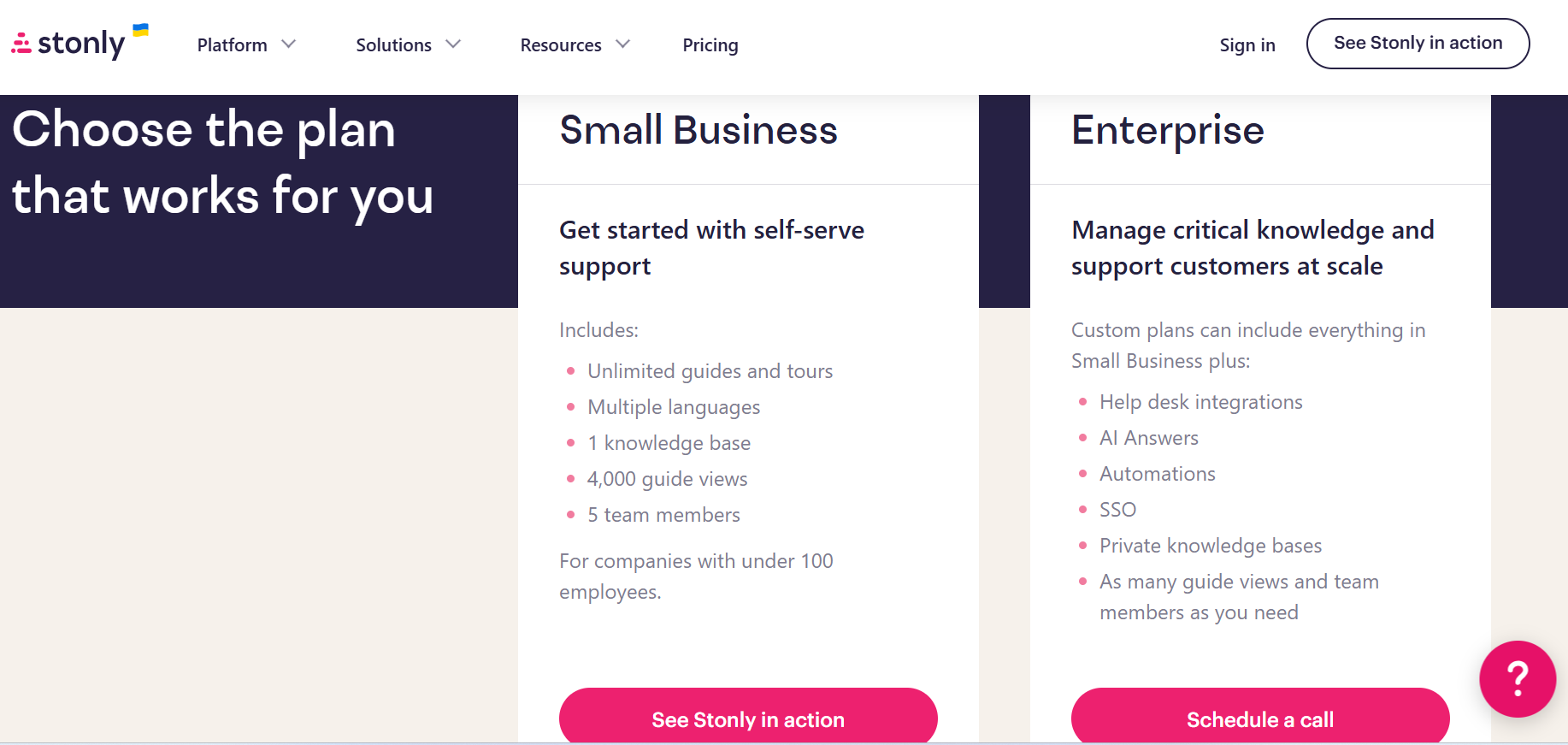
Which one should you choose?
Choosing between UserGuiding, Userflow, and Stonly comes down to your team’s priorities, resources, and growth stage.
Choose UserGuiding if…
You’re a startup or SMB that needs to get onboarding flows live quickly and affordably. It’s easy to set up, intuitive for non-technical teams, and budget-friendly.
Choose Userflow if…
You’re a mid-market or enterprise SaaS with the resources to invest in customization and targeting. Its depth and flexibility make it ideal for complex user onboarding, but the price reflects that.
Choose Stonly if…
Your priority is support and customer education. Its interactive knowledge base and integrations with Zendesk/Intercom make it the strongest option for reducing tickets and scaling self-service.
Do you care most about price? Ease of use? Customization? Support? Analytics? Your answers should point you to the right fit.
That said, if you want an all-in-one product growth platform that blends onboarding, in-product engagement, advanced analytics, and personalization, it’s worth considering Userpilot as an alternative.
Why consider Userpilot instead?
- Ease of use (vs. Userflow): Userflow is efficient, but it comes with a steeper learning curve. Userpilot offers a no-code builder that’s easier for non-technical teams to pick up while still providing advanced functionality when you need it.
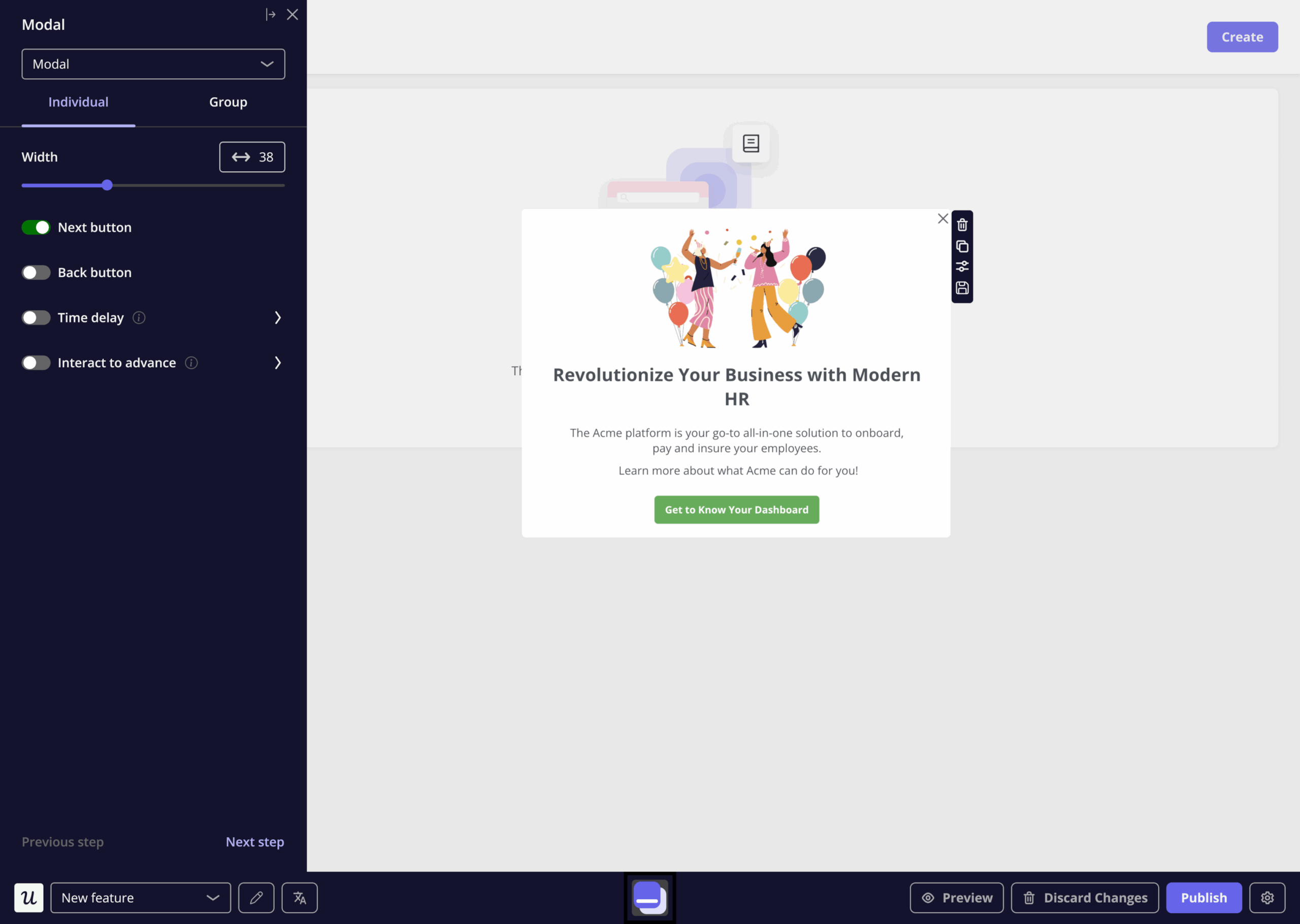
- Depth of in-app engagement (vs. Stonly): Stonly is excellent for knowledge bases, but Userpilot provides that functionality and goes deeper into product engagement.
Beyond the in-app resource center, Userpilot lets you build checklists, tooltips, modals, and full user flows, all without code. This broader feature set makes Userpilot better suited for SaaS teams that want to combine in-app support with product growth without switching between multiple tools.
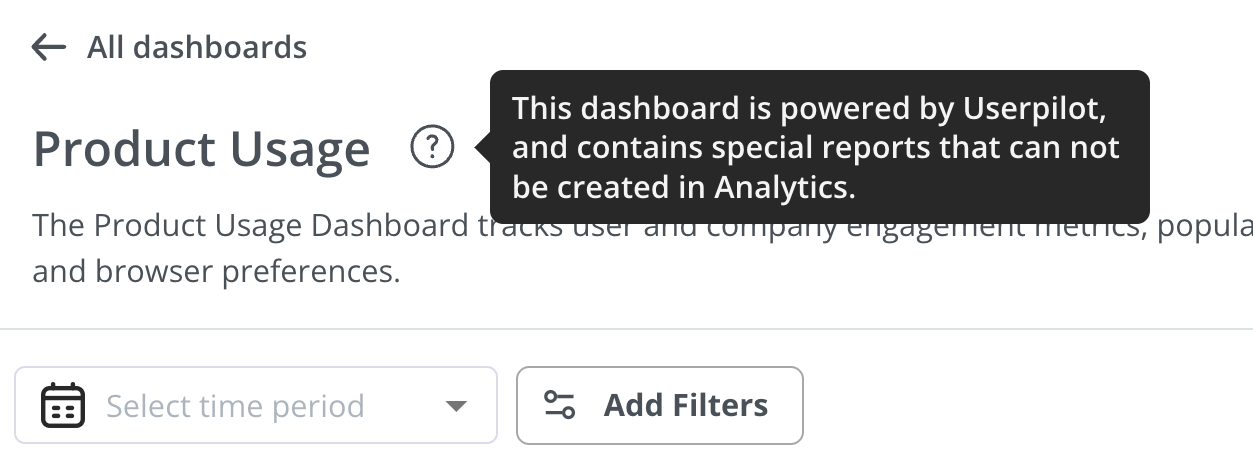
- Feature adoption analytics (vs. UserGuiding): Unlike UserGuiding’s basic reporting, Userpilot has stronger analytics. Our product lets you tag features, set goals, and measure how onboarding flows impact activation, feature usage, and retention over time. You can also autocapture user interactions, watch session replays, and use our advanced segmentation features to get granular customer insights.For example, imagine you’re trying to see how many users discovered and actually adopted a new dashboard feature after launch. With UserGuiding, you can only see surface-level metrics like guide completion rates or total survey responses. But with Userpilot, you can track exactly which users clicked the new dashboard, how often they came back, and whether they reached the activation milestones you’ve set.And if funnel analysis shows that some users are getting stuck midway, you can instantly dive into session recordings of those exact interactions to see what went wrong. With UserGuiding, you’d need to patch together an additional tool for that kind of visibility.
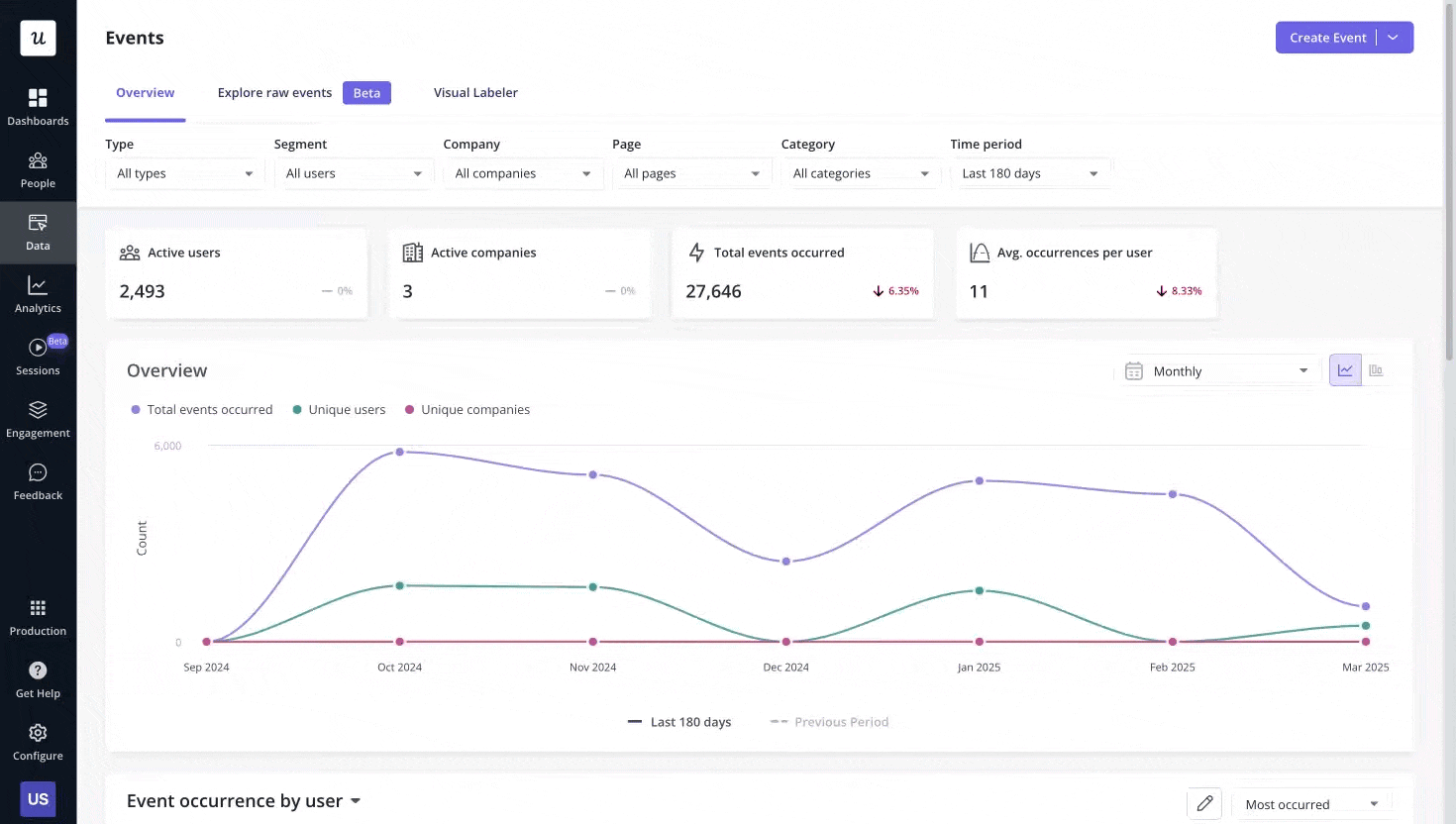
- Personalization: Userpilot’s segmentation and targeting features let you deliver highly personalized in-app flows. You can target specific content by plan type, lifecycle stage, user role, and other user attributes. Compared to UserGuiding and Stonly, this level of personalization is more advanced. Both tools offer basic user targeting, but Userpilot’s granularity (e.g., segmenting by behaviors, goals achieved, or plan upgrades) makes it far more powerful for teams that want to tie onboarding directly to growth outcomes.
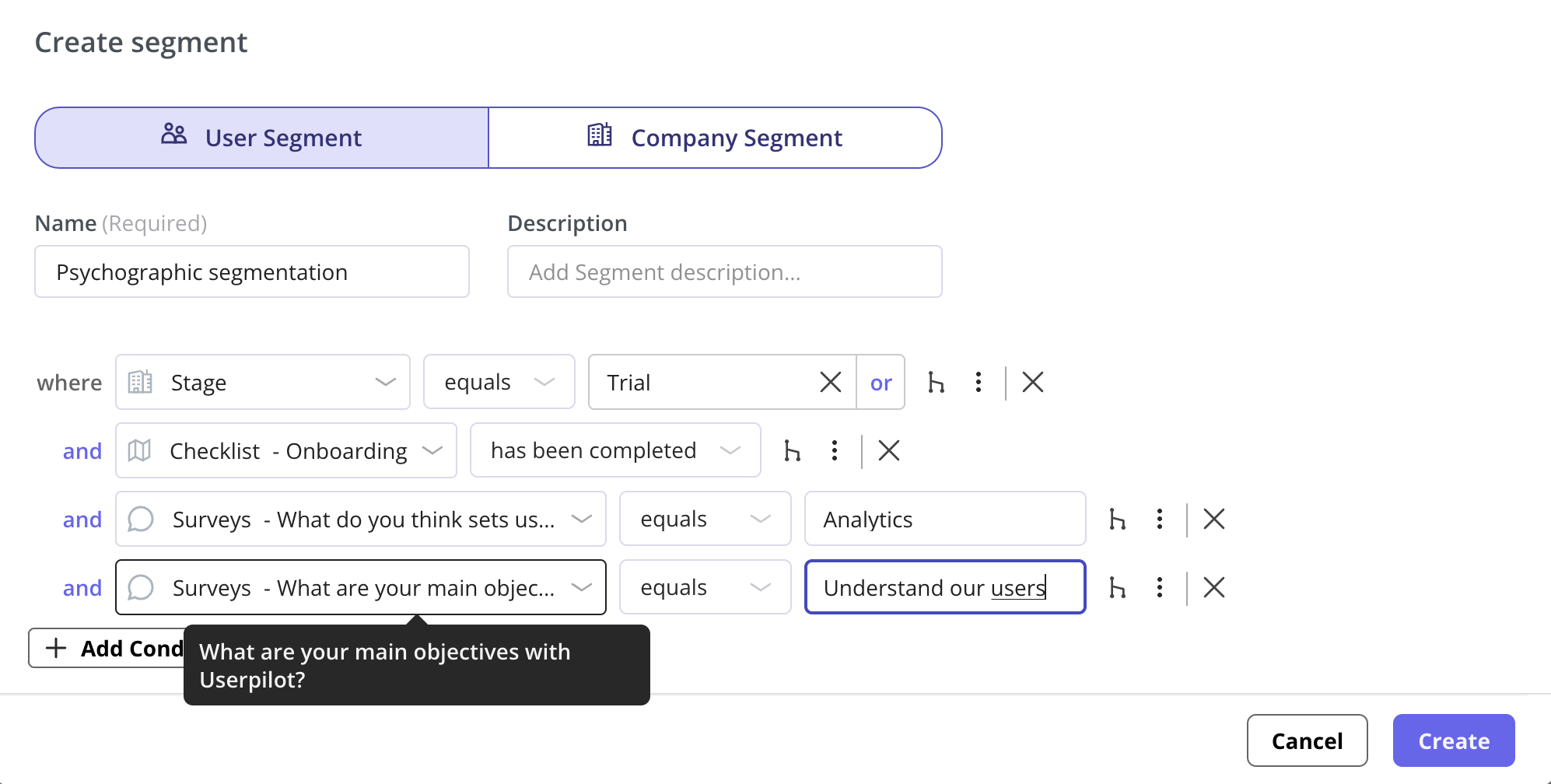
- Pricing and positioning: Userpilot sits in a mid-range pricing bracket. It’s more affordable than heavy enterprise tools but offers far more depth than starter products. In other words, it provides the best of both worlds for SaaS teams that are scaling quickly.
With Userpilot Mobile, you can build in-app carousels and slideouts for iOS and Android, send push notifications, and manage all web and mobile analytics in one platform.
Stonly offers mobile SDKs, but it focuses more on embedding support content. Userpilot is the frontrunner if you want a single tool to deliver true cross-platform onboarding and product growth.
Final verdict: UserGuiding vs. Userflow vs. Stonly
Choosing a tool for customer satisfaction and onboarding automation is no one-size-fits-all decision.
UserGuiding is a great entry point if you’re looking for a lightweight onboarding tool for startups. Userflow shines with its intuitive flow builder and strong customization, though it often relies on integrations for deeper analytics. Stonly is the clear winner for teams prioritizing interactive knowledge bases and self-service support, but it doesn’t deliver the full spectrum of in-product adoption features.
From my perspective as a PLG marketer, Userpilot stands out as the most comprehensive solution. Its no-code builder, advanced analytics, extensive feedback collection, and ability to unify both web and mobile experiences make it a powerful ally in driving user activation, adoption, and long-term product growth.
Ready to see what Userpilot can do for your team? Book a demo today.
FAQ
What is the difference between Userflow and UserGuiding?
The key difference lies in depth and scalability:
- UserGuiding is a no-code adoption platform designed to get product teams started fast. You can launch product tours, checklists, tooltips, and knowledge bases quickly, all with intuitive tools that don’t require a developer.
- Userflow, on the other hand, offers deeper flexibility and scale. You get unlimited flows, notification banners, and checklists, along with advanced customization, even on lower-tier plans.
What is the alternative to UserGuiding?
Popular UserGuiding alternatives include:
- Userflow: Known for its advanced customization, unlimited flows, and scalability for mid-market and enterprise teams.
- Stonly: Best suited for support-heavy teams that need interactive knowledge bases and branching guides. It’s also commonly used for employee onboarding.
- Userpilot: The best all-in-one alternative that provides all the features required to manage the onboarding journey end-to-end. Userpilot balances ease of use, advanced analytics, personalization, and unified web and mobile experiences.
What is Userpilot used for?
Userpilot is a no-code product growth tool that empowers non-technical teams to build, launch, and optimize in-app user experiences. It’s designed for:
- Onboarding users with interactive guides, checklists, and other onboarding materials.
- Driving adoption through feature tagging, in-app announcements, and in-product engagement nudges.
- Collecting user feedback with in-app surveys and NPS.
- Experimenting via A/B testing and analytics to measure impact.
- Event tracking across both web and mobile in one platform.



